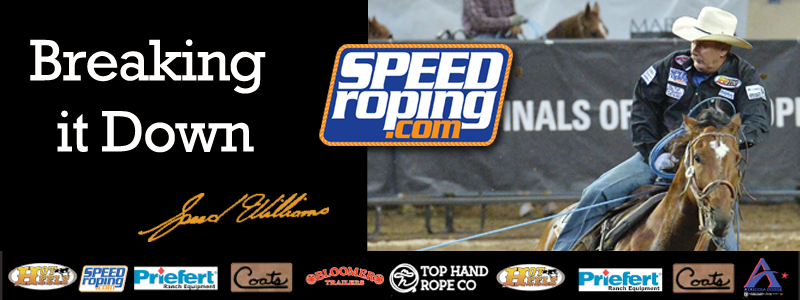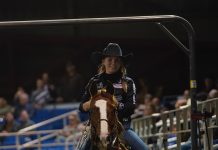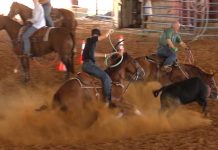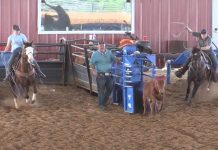The struggles of heeling

Growing up I heeled all the time. I went to the National Finals heeling when at 20 and decided there was more room for improvement on the heading end. I felt like I could do some things that headers weren’t doing. I really enjoyed the change of being in control.
One day maybe my son will become a header, but right now he doesn’t like it and only heads in the practice pen when we have clients who heel and I need him to head. Gabe has come a long way in his heeling. This December will be two years since he decided he wanted to rope. He’s always roped with me a little, maybe ten or fifteen minutes, and then he was gone. I’ve never pushed him to rope, but I have bribed him into roping. That’s no longer the case. He wants to rope nonstop and always asks for one more pen; not one more steer, but one more pen.
He’s twelve years old and has a #5 heel card. He’s entered at the USTRC Finals in the #12 through the #9. Some days in the practice pen he ropes really good. Same steers, same horses. The next day he may miss the majority of his steers. We talk about it all the time. There are steps you must go through heeling. If any steps are eliminated, there’s a good chance your run won’t be as successful as you would like.
Heeling is a math equation that changes every time the gate opens. There are so many variables: your partner, the number roping you’re in, the head horse you’re behind, and how fast you need to catch the cow based on your projection of what it will take to place in the roping.
We set up scenarios in the practice pen all the time. For instance, with his partner for the junior rodeos they need to be under 11-seconds to win the roping. There are different ways to approach the cow if you have 11 seconds to get a qualified run. Factors are your position as you ride down the arena, the width between you and the steer, and how early you turn in. It allows more leniency if the steer happens to check off so you won’t get on top of him and are forced to throw.
Now, if you have to be 7-seconds, you need to ride tighter and narrow the width between you and steer going down the arena. Depending on where the header turns, you have to put yourself in a position to heel in the first couple of jumps. That is where we are currently and are struggling with position and riding the corner. I have had him on horses where he doesn’t have to use the reins much. So, lately I’ve had him ride some horses where he has to use his left hand to control the position. This is where and why some heelers can have a bad day… when they start rushing the corner. It causes a lot of problems when you’re on top of the cow before he’s turned. When you’re so close to the cow that your horse’s head is in the wrong position and blocking your view, it’s very difficult to heel him.
Recently I was helping a #7+ heeler that was struggling. We ran through various scenarios in the arena and then went inside and watched the video. His swing, angle, and delivery were outstanding. However, his horse was in the wrong position in the corner and running too tight. When he turned in, his horses’ head was turned to the right and blocking his view. I got on his horse and roped the Hot Heels a few times. Then on the very first steer, I gave the horse a pocket and let him come in with his nose to the inside. It makes a world of difference in how fast you can rope when you can see the cow.
Often when heelers are struggling, it’s not their roping but their position and the angle of their position. When you’re in correct position, the cows are much easier to heel. When you’re in the wrong position, you have to use your rope handling ability to overcome obstacles.
Heeling is a frustrating and humbling thing and if you do not have the opportunity to practice a couple of times a week, it’s very hard to stay sharp, unlike heading. With heading you can rope the dummy, keep your horse legged up and be competitive. Heeling is a reaction to an action and there are so many things happening often you don’t have time to think. But, it sure is a lot of fun when you come around and rope one nice. Kind of like in golf when you hit your ball a long way with your driver… your confidence is high and you just want to do it again.
What’s new with me: We have moved into our new place in Comanche and are operational. We have our arena up and are teaching lessons. I’m excited with the response from customers who are using the Speed Trainer and seeing the benefits in their roping and riding.
I’m also happy to announce that Priefert has built us a new goat dummy, the Goat Trainer, that will help teach kids to get off their horses correctly. Stepping off is the dangerous part of goat tying. The Goat Trainer is much like the Speed Trainer where it lights up if you pull too hard on the reins. It also helps teach how to guide your horse when you’re riding the stirrup and getting ready to dismount. For ordering or more information about the Speed Trainer or Goat Trainer call Colter Buck at 903-434-8970.






